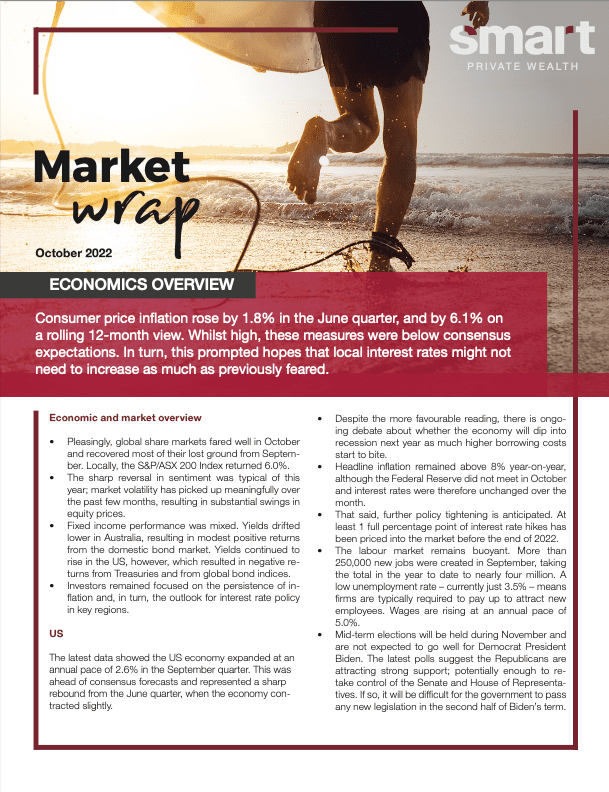Consumer price inflation rose by 1.8% in the June quarter, and by 6.1% on a rolling 12-month view. Whilst high, these measures were below consensus expectations. In turn, this prompted hopes that local interest rates might not need to increase as much as previously feared.
Australia has a high level of household debt, with a large- proportion of borrowers on variable-rate mortgages. Rate hikes can therefore be
particularly painful for Australians.
Policymakers therefore have a challenging task, balancing the need to dampen inflation through tighter monetary policy settings, without
strangling growth by crippling homeowners with sharply rising mortgage re- payment costs.
The Reserve Bank of Australia raised rates again on 1 November, by a further 0.25 percentage points. Official interest rates are now
2.85% and may be raised again in December.

Understanding the 3 stages of retirement and what they mean for your money, and how to future proof your retirement income.
SMART Business Solutions is proud to announce its recognition as the winner of Excellence in Local Community Connection (Medium–Large Business) and Excellence in Access and Inclusion at the 2025 Mornington Peninsula Business Excellence Awards.
Smart Private Wealth is proud to announce that Founding Director, Shannon Smit, has been recognised in the 2025 FS Power50, Financial Standard’s annual list of the 50 most influential financial advisers in Australia.